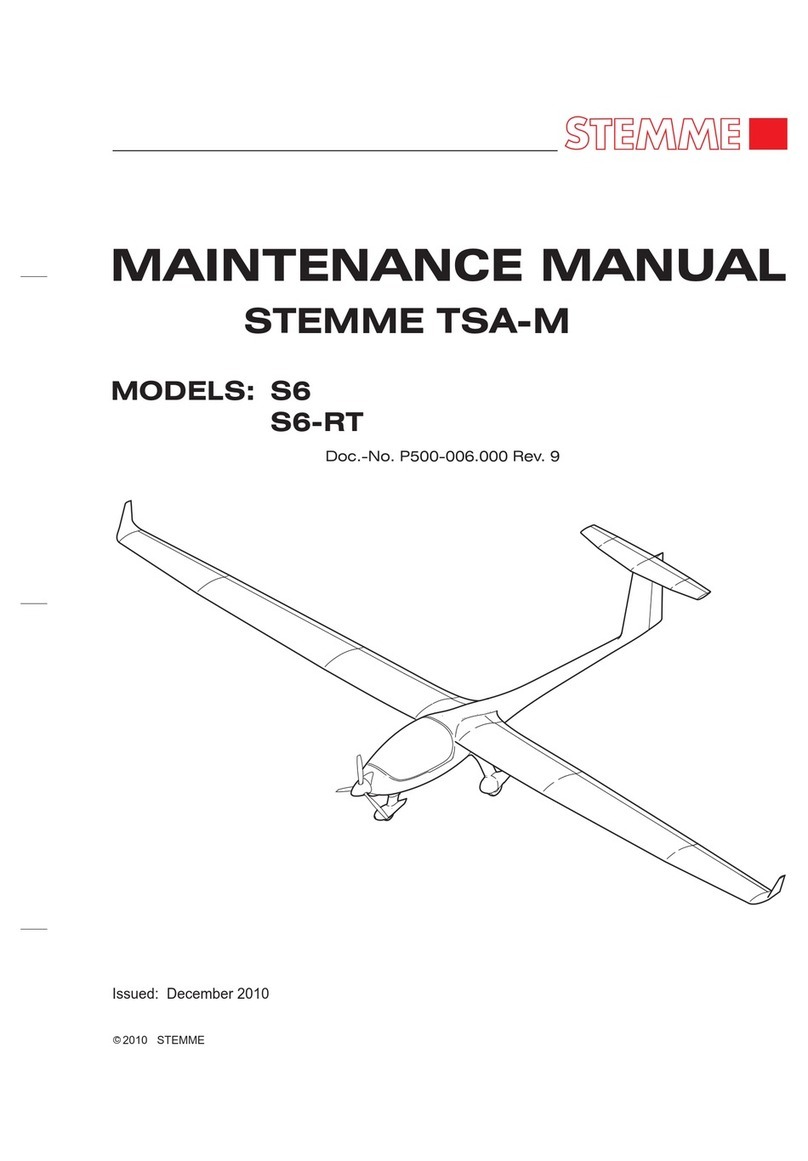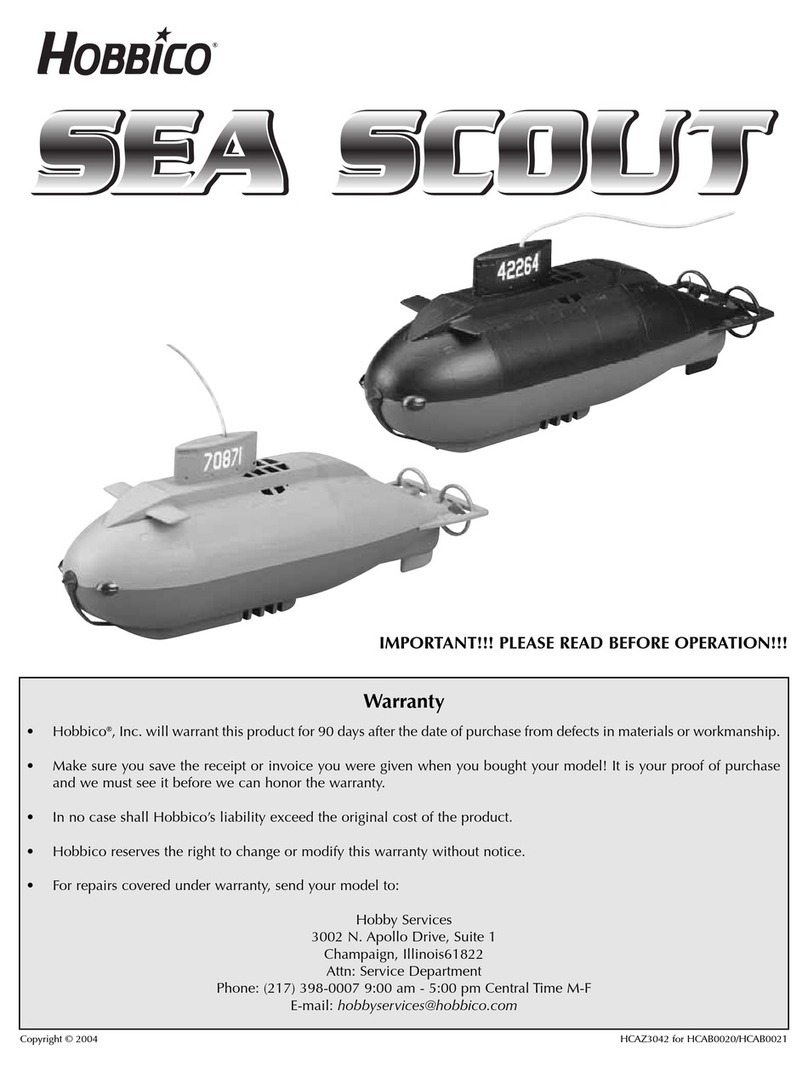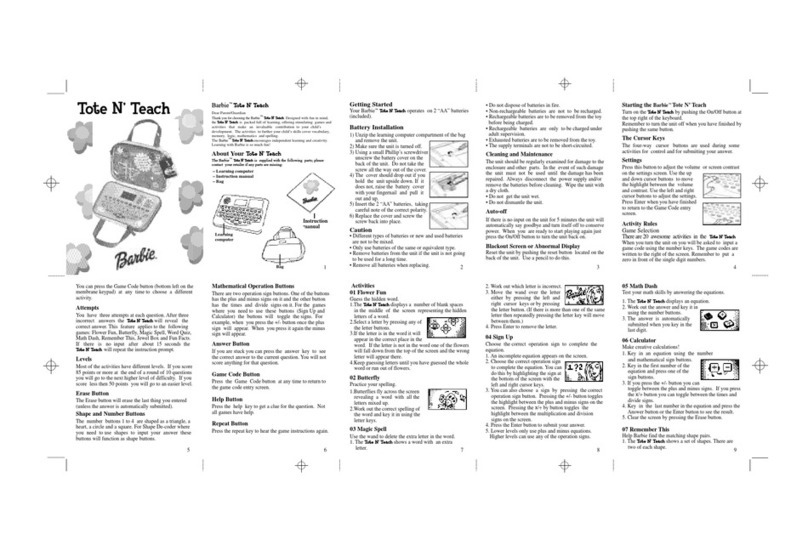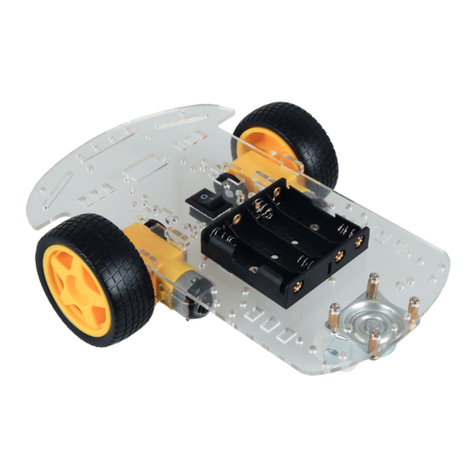STEMME S10-VT User manual


Maintenance Manual STEMME S10-VT Date of Issue: Jan. 01, 1998 Page ii
Amendment No.: 10 date: Dec. 14, 2001
A4011121_B23.doc Doc. No. A40-11-121
0.1 Record of Amendments
Any amendments of this manual must be recorded in the following table, except for:
•installation status of optional equipment, for optional equipment refer to section 9,
•amendments of the original ROTAX Maintenance Manual for the ROTAX 914 F (refer to Annex E).
Any modification or correction within the approved sections must be signed by the Luftfahrtbundesamt (LBA).
Information about amendments which must be inserted in this Manual, are given in the "Record of
Airworthiness Directives and Service Bulletins" (refer to Annex B).
New or amended text of the latest amendment is marked on the revised pages by a black vertical line in the
RH margin. The numbers of last amendment included and the date of the latest amendment is shown on the
RH side of the page-headline.
The original ROTAX Maintenance Manual for the ROTAX 914 F (refer to Annex E) is separately revised by
ROTAX.
The inspector confirms by his signature:
•the correct insertion of amendments.
Am.
No.
pages removed
pages inserted
Date of
amendment
Date of
insertion
Signature
1
ii, iv, v, 3-31, 7-26
ii, iv, v, 3-31, 7-26
18.03.1998
2
ii, iv, v, 3-55, 7-33
ii, iv, v, 3-55, 7-33
23.03.1998
3
ii, iv, v, viii, 7-10 ··· 7-18
ii, iv, v, viii, 7-10 ··· 7-18
22.07.1998
4
ii, iv, 3-9, 3-10, 3-14
ii, iv, 3-9, 3-10, 3-14
12.08.1998
5
ii, iv, 3-19, 5-6, 7-13
ii, iv, 3-19, 5-6, 7-13
29.10.1998
6
ii, iv, 3-50, 3-51
ii, iv, 3-50, 3-51
15.04.1999
7
ii, iv, 3-15
ii, iv, 3-15
03.08.1999
8
i, ii, iv...viii, 2-2, 3–16;
3-24...3-27, 3-55, 4-1, 4-2,
5-6, 5-9, 5-10, 6-8, 6-9,
6-13, 7-5, 7-11,
7-19...7-23, 7-28, 7-29,
8-2, 9–3; 11-1,
Cover Annex A,
Cover Annex C
i, ii, iv...viii, 2-2, 3–16;
3-24...3-27; 3-55, 4-1, 4-2,
5-6, 5-9, 5-10, 6-8, 6-9,
6-13, 7-5, 7-11, 7-19, 7-20,
7-21.1, 7-21.2, 7-22, 7-23,
7-28, 7-29, 8-2, 9–3; 11-1,
Cover Annex A,
Cover Annex C
11.11.1999
9
ii, iv, v, 4-1, 4-2, 4-3
ii, iv, v, 4-1, 4-2, 4-3
06.12.2000
10
i, ii, iv, v, 3-15, 3-32, 3-44,
3-45, 4-1, 4-2, 5-3, 5-4,
5-5, 5-8, 5-9, 8-7, 9-1, 9-2
i, ii, iv, v, 3-15, 3-32, 3-44,
3-45, 4-1, 4-2, 5-3, 5-4, 5-5,
5-8, 5-9, 8-7, 9-1.1, 9-1.2,
9-2
14.12.2001

Maintenance Manual STEMME S10-VT Date of Issue: Jan. 01, 1998 Page iii
Amendment No. 23 Date: Jan. 29, 2015
A4011121_B23.doc Doc. No. A40-11-121
Am.
No.
pages removed
pages inserted
Date of
amendment
Date of
insertion
Signature
11
iii, iv, 4-1, 4-2, 4-3
iii, iv, 4-1, 4-2, 4-3
27.01.2003
12
iii, iv, 4-1, 4-2, 4-3
iii, iv, 4-1, 4-2, 4-3
16.03.2005
13
iii, iv, v, 4-1..4-3, 5-8,
9-1.1, 9-1.2, 9-2..9-4
iii, iv, v, 4-1..4-3, 5-8, 9-1.1,
9-1.2, 9-2..9-4
25.05.2005
14
i, iii..v, viii, 1-1, 3-17,
3-19..3-21, 3-37, 3-38, 3-40,
4-1..4-3, 5-2, 6-9, 6-13,
7-9..7-17, 7-23, 7-32, 10-1,
Annex E
i, iii..v, viii, 1-1, 3-17,
3-19..3-21, 3-37, 3-38, 3-40, 4-
1..4-3, 5-2, 6-9, 6-13, 7-9..7-
17, 7-23, 7-32, 10-1, Annex E
30.11.2007
15
iii..vi, 1-2, 4-1..4-3
iii..vi, 1-2, 4-1..4-3
30.11.2008
16
iii, iv, 4-1..4-3
iii, iv, 4-1..4-3
24.02.2010
17
iii, iv, 4-1, 4-3
iii, iv, 4-1, 4-3
10.01.2011
18
iii, iv, v, vii, 5-1, 5-2,
cover sheet Annex E
iii, iv, v, vii, 5-1, 5-2,
cover sheet Annex E
07.06.2011
19
iii, iv, 4-1...4-3
iii, iv, 4-1...4-3
04.04.2012
20
iii, iv, 4-1…4-3, 5-5
iii, iv, 4-1…4-3, 5-5
13.08.2012
21
iii, iv, vi…viii, 4-1…4-3,
5-1…5-10
iii, iv, vi…viii, 4-1, 4-2,
5-1…5-11
15.10.2012
22
iii, iv, v, 3-3, 3-31, 3-50, 5-4,
6-7, 7-6, 7-26, 7-29, 7-30,
9-1.2, 9-2, 9-3, 9-4
iii, iv, v, 3-3, 3-31, 3-50.1,
3-50.2, 5-4, 6-7, 7-6, 7-26,
7-29, 7-30, 9-1.2, 9-2, 9-3,
9-4
Jan. 10, 2014
23
i, iii … viii, 4-1…4-2,
5-1…5-11, 7-23
i, iii … ix, 4-1…4-4, 5-1…5-21,
7-23
29.01.2015

Maintenance Manual STEMME S10-VT Date of Issue: Jan. 01, 1998 Page iv
Amendment No. 23 Date: Jan. 29, 2015
A4011121_B23.doc Doc. No. A40-11-121
0.2 List of Effective Pages
This list is only valid for the Serial No. specified on title page. The list contains all amendments of the
Maintenance Manual, effective until final approval of this Serial No. Amendments added later must be
recorded.
Page
Am. No.
Date
i
23
29.01.2015
ii
10
14.12.2001
iii
23
29.01.2015
iv
23
29.01.2015
v
23
29.01.2015
vi
23
29.01.2015
vii
23
29.01.2015
viii
23
29.01.2015
ix
23
29.01.2015
1-1
14
30.11.2007
1-2
15
30.11.2008
2-1
2-2
8
11.11.1999
2-3
3-1
3-2
3-3
22
10.01.2014
3-4
3-5
3-6
3-7
3-8
3-9
4
12.08.1998
3-10
4
12.08.1998
3-11
3-12
3-13
3-14
4
12.08.1998
3-15
10
14.12.2001
3-16
8
11.11.1999
3-17
14
30.11.2007
3-18
3-19
14
30.11.2007
3-20
14
30.11.2007
3-21
14
30.11.2007
3-22
3-23
Page
Am. No.
Date
3-24
8
11.11.1999
3-25
8
11.11.1999
3-26
8
11.11.1999
3-27
8
11.11.1999
3-28
3-29
3-30
3-31
22
10.01.2014
3-32
10
14.12.2001
3-33
3-34
3-35
3-36
3-37
14
30.11.2007
3-38
14
30.11.2007
3-39
3-40
14
30.11.2007
3-41
3-42
3-43
3-44
10
14.12.2001
3-45
10
14.12.2001
3-46
3-47
3-48
3-49
3-50.1
22
10.01.2014
3-50.2
22
10.01.2014
3-51
6
15.04.1999
3-52
3-53
3-54
3-55
8
11.11.1999
4-1
23
29.01.2015
4-2
23
29.01.2015
4-3
23
29.01.2015
4-4
23
29.01.2015
Page
Am. No.
Date
5-1
23
29.01.2015
5-2
23
29.01.2015
5-3
23
29.01.2015
5-4
23
29.01.2015
5-5
23
29.01.2015
5-6
23
29.01.2015
5-7
23
29.01.2015
5-8
23
29.01.2015
5-9
23
29.01.2015
5-10
23
29.01.2015
5-11
23
29.01.2015
5-12
23
29.01.2015
5-13
23
29.01.2015
5-14
23
29.01.2015
5-15
23
29.01.2015
5-16
23
29.01.2015
5-17
23
29.01.2015
5-18
23
29.01.2015
5-19
23
29.01.2015
5-20
23
29.01.2015
5-21
23
29.01.2015
6-1
6-2
6-3
6-4
6-5
6-6
6-7
22
10.01.2014
6-8
8
11.11.1999
6-9
14
30.11.2007
6-10
6-11
6-12
6-13
14
30.11.2007
7-1
7-2

Maintenance Manual STEMME S10-VT Date of Issue: Jan. 01, 1998 page v
Amendment No.: 23 Date: Jan. 29, 2015
A4011121_B23.doc Doc. No. A40-11-121
7-3
7-4
7-5
8
11.11.1999
7-6
22
10.01.2014
7-7
7-8
7-9
14
30.11.2007
7-10
14
30.11.2007
7-11
14
30.11.2007
7-12
14
30.11.2007
7-13
14
30.11.2007
7-14
14
30.11.2007
7-15
14
30.11.2007
7-16
14
30.11.2007
7-17
14
30.11.2007
7-18
3
22.07.1998
7-19
8
11.11.1999
7-20
8
11.11.1999
7-21.1
8
11.11.1999
7-21.2
8
11.11.1999
7-22
8
11.11.1999
7-23
23
29.01.2015
7-24
7-25
7-26
22
10.01.2014
7-27
7-28
8
11.11.1999
7-29
22
10.01.2014
7-30
22
10.01.2014
7-31
7-32
14
30.11.2007
7-33
2
23.03.1998
8-1
8-2
8
11.11.1999
8-3
8-4
8-5
8-6
8-7
10
14.12.2001
9-1.1
13
25.05.2005
9-1.2
22
10.01.2014
9-2
22
10.01.2014
9-3
22
10.01.2014
9-4
22
10.01.2014
10-1
14
30.11.2007
11-1
8
11.11.1999
Page
Am. No.
Date
cover sheet
Annex A
8
11.11.1999
cover sheet
Annex B
cover sheet
Annex C
8
11.11.1999
cover sheet
Annex D
cover sheet
Annex E
18
07.06.2011

Maintenance Manual STEMME S10-VT Date of Issue: Jan. 01, 1998 Page vi
Amendment No. 23 Date: Jan. 29, 2015
A4011121_B23.doc Doc. No. A40-11-121
0.3 Contents
0.1 Record of Amendments ii
0.2 List of Effective Pages iv
0.3 Contents vi
1. General Remarks on Maintenance 1-1
1.1 Conversion table 1-2
1.2 Abbreviations 1-2
2. Brief Description and Technical Data 2-1
3. Description of Assemblies 3-1
3.1 Airframe, Primary and Secondary Structure 3-1
3.1.1 Wing 3-1
3.1.2 Fuselage 3-1
3.1.3 Tail Unit 3-2
3.2 Cockpit3-2
3.2.1 General 3-2
3.2.2 Control Elements and Instruments 3-3
3.3 Flight Control System 3-8
3.4 Power Plant (Fig. 3.4.a) 3-17
3.4.1 Engine 3-17
3.4.2 Lubrication System 3-19
3.4.3 Cooling System 3-19
3.4.4 Air Induction System 3-20
3.4.5 Engine Exhaust incl. Turbocharger and Attachment 3-20
3.4.6 Fuel System (Fig. 3.4.6) 3-21
3.4.7 Engine Controls and Instrumentation 3-23
3.4.8 Fire Protection 3-23
3.4.9 Engine Cowlings 3-23
3.4.10Propeller (Fig. 3.4.10.a/b/c) 3-24
3.4.11Power Transmission 3-27
3.4.12Front gear 3-27
3.4.13Operation Mechanism of the Propeller Folding System 3-28
3.4.14Operating Media 3-29
3.5 Landing Gear 3-31
3.5.1 Main Landing Gear (Fig. 3.5.1) 3-31
3.5.2 Tail Wheel 3-31
3.6 Flight Control Instruments, Pitot Static System (Fig. 3.6.a,b) 3-33
3.7 Electrical System 3-35
3.7.1 General 3-35
3.7.2 Wiring 3-35
3.7.3 Bus-Structure of the Electrical System 3-35
3.7.4 Structure of Grounding 3-36
3.7.5 Generation of Electric Energy 3-36
3.7.6 Engine Electric 3-37
3.7.7 Engine Monitoring 3-37
3.7.8 Instruments on the Instrument Panel 3-38
3.7.9 Warning, Caution and Status Lights on the Instrument Panel: 3-38
3.7.10Fuses and Circuit Breakers (CB´s): 3-39
3.7.11Switches on the Instrument Panel: 3-39
3.7.12Variable Pitch Propeller 3-41
3.7.13Main Landing Gear 3-41
3.7.14Landing Gear Warning System 3-41
3.7.15Avionics 3-41
3.8 COM and NAV Equipment 3-55
3.9 Oxygen System 3-55

Maintenance Manual STEMME S10-VT Date of Issue: Jan. 01, 1998 Page vii
Amendment No. 23 Date: Jan. 29, 2015
A4011121_B23.doc Doc. No. A40-11-121
4. Airworthiness Limitations Section 4-1
4.1 General4-2
4.2 Maintenance Limitations 4-2
4.2.1 Paint Finish 4-2
4.3 Component Replacement and Overhaul Limitations 4-3
4.4 Structural Limitations 4-4
5. Time Limits / Maintenance Checks 5-1
5.1 Overhaul and Replacement Schedule 5-2
5.2 Pre-Flight Inspections 5-5
5.2.1 Rubber Hose and Clamp Integrity 5-5
5.3 Periodical Inspections 5-5
5.3.1 Inspection Intervals 5-5
5.3.2 General Remarks on Periodic Inspections 5-7
5.3.3 Additional Calendar-Related Inspections 5-7
5.3.4 Unscheduled Maintenance 5-8
5.3.5 Special Conditions and Cautionary Notice 5-8
5.3.6 General Remarks on Maintenance 5-9
5.3.7 Inspection Groups and Maintenance Criteria 5-10
5.3.8 Other Particulars of Maintenance 5-12
5.4 Check List for Periodical Inspections 5-13
5.4.1 General 5-13
5.4.2 Wings and Fuel System Components in the Central Wing 5-13
5.4.3 Front Fuselage 5-14
5.4.4 Cockpit 5-14
5.4.5 Center Fuselage (except for fairings) 5-14
5.4.6 Tail Boom 5-15
5.4.7 Empennage 5-15
5.4.8 Fuel System Components in the Fuselage 5-15
5.4.9 Engine and Engine Mountings 5-16
5.4.10Lubrication System 5-16
5.4.11Cooling System (Liquid Cooling, Ram Air Cooling) 5-16
5.4.12Air Induction System 5-17
5.4.13Engine Controls & Monitoring 5-17
5.4.14Center Fuselage Fairing, Engine Cowlings and Fire-Wall 5-17
5.4.15Propeller 5-17
5.4.16Drive Shaft with Front Gear 5-18
5.4.17Main Landing Gear 5-18
5.4.18Tail Wheel 5-19
5.4.19Flight Instrumentation and Pressure Systems 5-19
5.4.20Electric System (except for engine and TCU) 5-19
5.4.21COM and NAV Equipment 5-20
5.4.22Oxygen Equipment 5-20
5.4.23Completition works 5-20
5.5 Special Inspections 5-21
5.5.1 Inspection Following a Heavy Landing or a Wing Tip Landing 5-21
5.5.2 Inspection Following an Impact to the Rotating Propeller 5-21
6. Maintenance Instructions, Tolerances, Adjustment Data for the Aircraft 6-1
6.1 General Remarks 6-1
6.2 Towing on ground, Jack Points and Lifting 6-1
6.3 Determination of Empty Weight and Corresponding Centre-of-Gravity; Weight Limits 6-2
6.4 Flight Control System 6-7
6.4.1 Deflection of Control Surfaces, Control System Friction, and Control Forces 6-7
6.4.2 Masses and Moments of Control Surfaces 6-8
6.4.3 Free Play in Flight Control System 6-8
6.5 Lubrication 6-9

Maintenance Manual STEMME S10-VT Date of Issue: Jan. 01, 1998 Page viii
Amendment No. 23 Date: Jan. 29, 2015
A4011121_B23.doc Doc. No. A40-11-121
6.5.1 General Remarks 6-9
6.5.2 Lubrication Plan 6-10
6.6 Surface of Composite Structures 6-11
6.7 Drainage and Ventilation Holes 6-12
6.8 Tightening Torques of Screwed Joints: 6-13
7. Maintenance Instructions, Tolerances and Adjustment Data for Assemblies /
Equipment 7-1
7.1 Airframe 7-1
7.1.1 Wing 7-1
7.1.2 Fuselage 7-2
7.1.3 Empennage 7-3
7.2 Cockpit 7-5
7.2.1 Canopy 7-5
7.2.2 Equipment and Systems 7-6
7.3 Controls 7-7
7.3.1 Controls in Fuselage 7-7
7.3.2 Controls in the Wing 7-7
7.3.3 Controls in Tail Cone/Vertical Tail 7-8
7.3.4 Deflection of Control Surfaces, Control System Friction, Control Forces 7-8
7.3.5 Slackness of Control System Bearings 7-8
7.4 Powerplant 7-9
7.4.1 Engine 7-9
7.4.2 Lubrication System 7-12
7.4.3 Cooling System 7-12
7.4.4 Air Induction System 7-13
7.4.5 Exhaust System 7-14
7.4.6 Fuel System 7-15
7.4.7 Engine Controls / Monitoring 7-16
7.4.8 Fire Protection 7-17
7.4.9 Cowlings 7-18
7.4.10Propeller 7-19
7.4.11Drive Shaft System 7-23
7.4.12Front Gear, Mounting and Support 7-24
7.4.13Propeller Operation 7-25
7.5 Landing Gear 7-26
7.5.1 Main Landing Gear 7-26
7.5.2 Tailwheel 7-30
7.6 Flight Control Instruments and Pitot and Static Pressure System 7-31
7.6.1 Calibration of Stall Warning System: 7-31
7.6.2 Maintenance on the Static Pressure System 7-31
7.7 Electrical System 7-32
7.7.1 General 7-32
7.7.2 Batteries 7-32
7.7.3 Grounding 7-32
7.7.4 E-Box 7-32
7.8 Communication and Navigation Equipment 7-33
7.9 Oxygen Equipment 7-33
8. List of Placards and their Positions 8-1
9. Equipment 9-1
9.1 Minimum Equipment List 9-1
9.2 Supplementary Equipment 9-2
9.3 Additional Equipment and Systems 9-2

Maintenance Manual STEMME S10-VT Date of Issue: Jan. 01, 1998 Page ix
Amendment No. 23 Date: Jan. 29, 2015
A4011121_B23.doc Doc. No. A40-11-121
9.3.1 Additional Equipment 9-2
9.3.2 Optional Systems 9-4
10. List of Special Tools 10-1
11. List of Maintenance Documents for Parts Being Approved Independently from
the Aircraft. 11-1
Annex A: Supplementary Instructions for Maintenance and Care, Maintenance Instructions
Annex B: Service Bulletins, Airworthiness Directives
Annex C: Documents (Inspection and Operation Reports)
Annex D: Maintenance and Inspection Forms.
Annex E: Maintenance Manual (Line Maintenance) for ROTAX Engine Type 914 Series

Maintenance Manual STEMME S10-VT Date of Issue: Jan. 01, 1998 Page 1-1
Amendment Nr. 14 Date: Nov. 30, 2007
A4011121_B23.doc Doc. No. A40-11-121
1. General Remarks on Maintenance
The legal owner of the STEMME S10-VT is obliged to ensure that, according to the specific national laws and
regulations, the maintenance of the aircraft follows the instructions of this manual. Among others, there are
scheduled maintenance,
adjustments,
exchange of fluids and lubricants,
exchange of parts after expiry of their service life,
minor repairs.
Any maintenance work must be documented (a/c logbook).
The manufacturer has to be informed immediately in case of any change of ownership. The message must
be confirmed by the manufacturer, so that all information concerning airworthiness (AD´s, SB´s) can be given
to the legal owner.
For maintenance work the following documents are relevant:
1. This Maintenance Manual for the powered glider STEMME S10-VT,
2. STEMME - "Flight Manual for the powered glider STEMME S10-VT",
3. ROTAX - "Maintenance Manual (Line Maintenance) for ROTAX Engine Type 914 Series”,
4. ROTAX - "Maintenance Manual (Heavy Maintenance) for ROTAX Engine Types ROTAX 912 and 914
Series”,
5. ROTAX - "Operating Manual“ ROTAX 914 F,
6. ROTAX - "Installation Manual“ ROTAX 914 F,
7. ROTAX - "Main Overhaul Manual“ ROTAX 914 F,
8. ROTAX - "Spare Parts List“ ROTAX 914 F,
9. STEMME Doc. No. A26-11AM-M: Technical Specification of the ROTAX 914 F2/S1,
10.Maintenance instructions for the "L'Hotellier" quick-disconnects in flight control system,
11.Manufacturer's documents referring to the equipment listed in the equipment list of the corresponding S/N,
12.SB´s published by STEMME, ROTAX and manufacturer of other equipment installed,
13.Maintenance Instructions from STEMME,
14.Service Information's from ROTAX.
The amount and kind of maintenance work depend on the a/c utilisation, the climate, airfield conditions,
storing facilities and other factors, irrespective of the periodic checks. E. g., in sandy environs it might be
necessary to clean all filters before every commencement of operation; on the other hand in coastal or in
rainy regions it is important to take more care of the conservation of the a/c. The instructions in this manual
are valid under normal conditions and use.
Use only spare parts from the manufacturer or according to the manufacturer's requirements.
NOTE: Materials required and recommended procedures for minor repairs on composite materials are
indicated in the repair guide "Minor repair to components of fibrous composite material" in Annex A of
this Maintenance Manual.
In case of any incident endangering airworthiness the manufacturer must be informed immediately.
Maintenance work must be performed by qualified personnel.
NOTE: This Maintenance Manual does not include instructions for assembly, daily inspection and Pre-flight
inspection, which are provided in section 4 "Normal Operating Procedures" of the Flight Manual. To
perform these procedures, the Flight Manual must be available to the maintenance personnel.

Maintenance Manual STEMME S10-VT Date of Issue: Jan. 01, 1998 Page 1-2
Amendment Nr. 15 Date: Nov. 30, 2008
A4011121_B23.doc Doc. No. A40-11-121
1.1 Conversion table
For the conversion of technical data the following factors have been used:
1 lb.
0.4536 kg
1 lbf ft
1.356 Nm
1 dr.
1.772 g
1 hp
0.7457 kW
1lbf =1 lb.(wt)
4.45 N
1 kts
1.852 km/h
1in.
25.4 mm
1 mph
1.609 km/h
1ft.
0.3048 m
1 Imp.gal.
4.546 l
1 sqft.
0.0929 m2
1 US gal.
3.785 l
100 fpm
0.5081 m/s
1 p.s.i.
0.06895 bar
1.2 Abbreviations
The following abbreviations are being used for clarity:
a/c
aircraft
AUW
all-up-weight
CB
circuit breaker
CFRP
carbon-fibre-reinforced-plastic
CG
centre-of-gravity
CHT
cylinder head temperature
DCDI
dual capacity discharge ignition
GFRP
glass-fibre-reinforced-plastic
KIAS
knots indicated airspeed
LH
left hand
MAP
manifold pressure
OAT
outside air temperature
RH
right hand
RPM
revolutions per minute
PPC
propeller pitch control
TCU
turbo charger control unit

Maintenance Manual STEMME S10-VT Date of Issue: Jan. 01, 1998 Page 2-1
Amendment Nr. 0 Date: --
A4011121_B23.doc Doc. No. A40-11-121
2. Brief Description and Technical Data
The STEMME S10-VT is a twin-seat high performance powered sailplane with an innovative propulsion
concept and a sophisticated aerodynamic design. The wing is a carbon fibre reinforced composite design.
The fuselage is manufactured as a hybrid construction (carbon, kevlar, glass) with an extremely rigid central
steel tube framework. The seats are arranged side by side and equipped with dual controls.
The wing is attached to the fuselage in the upper third section of the fuselage behind the cockpit. The wing
consists of a one-part central wing equipped with flaps and Schempp-Hirth air brakes as well as two outboard
wings with continuous ailerons. The tail unit is designed as a T-tail.
The two-leg landing gear is electrically operated and is equipped with hydraulic disc brakes. The tail wheel is
steered with the pedals.
The engine is located in the fuselage in the central steel tube framework near the aircraft centre of gravity.
The engine power is transmitted via an internal gear, a freewheel clutch, a composite drive-shaft and a front
reduction gear to a foldable propeller in the fuselage nose. The electrically operated variable pitch propeller
with two blades can be folded and completely covered by a retractable nose cone ("propeller dome") for
soaring.
One fuel tank is located in each outboard area of the central wing. Engine fuel supply is by two electrically
driven pumps (1 main, 1 aux) for each wing tank, which can be selected with a fuel selector switch for supply
from the left tank, both tanks or from the right tank.
Technical Data (general drawing see Fig. 2.a)
Wing
wing span
23.00 m
75.5 ft.
central wing span
9.90 m
32.5 ft.
wing area
18.74 m²
201.7 sqft.
aspect ratio
28.22
dihedral angle
0.75°
sweep of central wing leading edge
0°
sweep of outboard wing leading edge up to the bend
0°
airfoil: laminar profile
HQ41/14.35
Air Brakes (two-storey Schempp-Hirth air brakes on wing upper side only)
length
1.50 m
59 in.
area
0.22 m²
2.37 sqft.
maximum height above wing upper side
0.16 m
6.3 in.
Wing Flaps
span
4.39 m
14.4 ft.
area
0.75 m²
8.07 sqft.
flap positions:
-10°, -5°, 0°, +5°, +10°, L (+16°)
Ailerons
span
5.80 m
19 ft.
area
0.68 m²
7.32 sqft.
Fuselage
length
8.42 m
27.6 ft.
width
1.18 m
3.9 ft.
cockpit width
1.16 m
3.8 ft.
cockpit height
0.93 m
3.1 ft.
height of tail unit
1.75 m
5.7 ft.

Maintenance Manual STEMME S10-VT Date of Issue: Jan. 01, 1998 Page 2-2
Amendment Nr. 8 Date: Nov. 11, 1999
A4011121_B23.doc Doc. No. A40-11-121
Vertical Tail
height
1.60 m
5.2 ft.
total area
1.51 m²
16.25 sqft.
area of rudder
0.52 m²
5.60 sqft.
airfoil
FX 71-L-150/35
Horizontal Tail
span
3.10 m
10.2 ft.
total area
1.46 m²
15.72 sqft.
area of elevator
0.36 m²
3.88 sqft.
aspect ratio
6.58
airfoil
FX 71-L-150/25
Landing Gear
2 main wheels with brake discs, rim of wheel
127x127-30
tire size: (standard/wide tire)
5.00-5 / 6.00-5
wheel track: (standard/wide tire)
1.15 m / 1.16 m
3.77 ft / 3.8 ft.
tail wheel (steerable), tire size
210 x 65
wheel base
5.46 m
17.9 ft.
Power-Plant
engine
ROTAX 914 F2/S1
T/O-power (115%, max 5 minutes)
at 5800 RPM
84.5 kW
113.2 hp
max continuos power (100%)
at 5500 RPM
73.4 kW
98.4 hp
gear transmission ratio front gear
i = 1.109
gear transmission ratio engine-gear
i = 0.412
Variable-Pitch Propeller
Model
STEMME 11 AP
diameter extended
DPA = 1.63 m
63.4 in
mass of the propeller (incl. outer-casing of
needle bearing and rubber buffers)
mP= 9350 g
20.61 lbs
overall mass of propeller blade
mB= 650 g ± 10 g
1.433 lbs ± 0.022 lbs
max. propeller RPM
nP = 2.650 RPM
propeller pitch T/O position
P= 17.65°
cruise position
P= 24.05°
max. current consumption of the resistor element
Imax = 10 A
Weights (see also figures 6.3a/ 6.3.b and form "Weight and Balance Report")
maximum allowable weight
850 kg
1874 lbs
empty weight, including minimum equipment
660 kg1)
1455.1 lbs1)
maximum weight of non-supporting parts
570 kg
1257 lbs
total useful load (occupants, fuel, baggage)
190 kg1)
419 lbs1)
1) Load distribution according to Weight & Balance, refer to Flight Manual. Empty weight of 660 kg / 1455 lbs
is without optional equipment. Useful load is reduced by additional equipment.
Inflight Centre of Gravity range
In-flight Centre-of-Gravity range aft of datum
(central wing leading edge, see section 6.3)
254 - 420 mm
10 in. - 16.5 in.
For more technical data, please refer to the Flight Manual.
Following figure shows a 3-view plan of the S10-VT.

Maintenance Manual STEMME S10-VT Date of Issue: Jan. 01, 1998 Page 2-3
Amendment Nr. 0 Date: --
A4011121_B23.doc Doc. No. A40-11-121
Fig. 2.a: 3-View Plan of the S10-VT

Maintenance Manual STEMME S10-VT Date of Issue: Jan. 01, 1998 Page 3-1
Amendment Nr. 0 Date: --
A4011121_B23.doc Doc. No. A40-11-121
3. Description of Assemblies
3.1 Airframe, Primary and Secondary Structure
The Primary Structure includes:
wing spars, root ribs, and wing spar boxes
wing shells
central fuselage framework
tail boom and vertical stabiliser
front section of fuselage
horizontal stabiliser
fittings
The Secondary Structure includes:
control surfaces
cowlings, cooling air system ducts, cockpit components
3.1.1 Wing
Structural design: Carbon fibre reinforced plastic (CFRP) sandwich shell, CFRP spars.
The wing consists of three sections: a central wing with a span of 9.90 m / 32.5 ft. and two outboard wing
sections with a span of 6.55 m / 21.5 ft. each. Attachment of the central wing to the fuselage is by means of
four sliding bolts, attachment of the outboard wings to the central wing is with one sliding bolt each.
A removable fairing covers the wing/fuselage combination. Beneath the fairings, free access to the wing
attachment, the control system joints and the combined aileron/flap controls is possible. For disassembly, the
central wing has to be lifted vertically.
The flaps extend to the total span of the central wing and the ailerons to the total span of the outboard wings.
The controls of flaps and ailerons are interconnected, the ailerons acting as differential flaps and the flaps
acting as differential ailerons. The flap deflection is reduced from the inner to the outer wing, the aileron
deflection is reduced from outer to the central wing and from up to down deflections.
Two-storey Schempp-Hirth air brakes are installed on the centre wing upper side.
The slots of flaps and ailerons are sealed with elastic adhesive tape and a skid layer on the upper side of the
wing and with a textile tape (elastic adhesive tape and skid layer optional) on the lower side.
A boundary layer turbulator (adhesive 60° zigzag tape, leading edge at 69% of chord, 12 x 0.5 mm / 0.47 x
0.02 in.) on the wing lower side ensures a defined flow transition.
3.1.2 Fuselage
The fuselage is a modular construction of three assemblies with bolted joints: the front fuselage section
(CFRP-Kevlar-fibreglass construction), the centre fuselage framework and the tail boom (CFRP
construction).
Loads from the fuselage front section, the wing, the landing gear, the power-plant and the tail unit are
transmitted by the central fuselage framework.
The centre fuselage framework is covered by self-supporting fairings (upper fairing and engine cowlings) of
GFRP-sandwich. The attachment of the fairings is by means of camlocks, which can be easily opened with a
screw-driver. The upper fairing includes an oil service access, which can be opened without a tool.

Maintenance Manual STEMME S10-VT Date of Issue: Jan. 01, 1998 Page 3-2
Amendment Nr. 0 Date: --
A4011121_B23.doc Doc. No. A40-11-121
3.1.3 Tail Unit
Horizontal Tail
T-arrangement, easy removable (simple spring-bolt connection),
Stabiliser as sandwich construction of CFRP, elevator made of CFRP.
Elevator slots sealed by elastic tape.
Boundary layer turbulator (adhesive 60° zigzag tape, leading edge at 65% of chord, 12 x 0.5 mm / 0.47 x
0.02 in.) on upper and lower side for defined flow transition.
Vertical Tail
Stabiliser as a sandwich construction of CFRP, rudder as a sandwich construction of GFRP,
rudder slot sealed by elastic tape with integrated zigzag turbulator (combi-tape),
COM antenna integrated in rudder.
3.2 Cockpit
3.2.1 General
The two seats are arranged side by side. The GFRP seat back rests are multi-adjustable. Each seat is
equipped with 4-point seat belts and a central harness.
Dual controls are provided. Between the seats a console covers systems and the drive shaft tunnel. The
mushroom-style panel arrangement has three separate areas: LH side, centre and RH side.
The one-piece canopy is hinged at the front and held in opened position by gas springs. Three canopy locks
on both, left hand and right hand side, are operated by one locking lever on each side. One lock to improve
canopy emergency jettisoning ("Roeger-hook") is installed in the rear upper canopy frame, to be operated by
the handle next to it.
Emergency jettisoning: open both locking levers on sides and pull the red T-shaped handle on the instrument
panel for emergency jettisoning. The canopy hinge opens and is lifted by a gas spring by approximately
100 mm / 4 in. The Roeger hook must remain closed, since it is the axis of rotation until the canopy is
jettisoned.
The cockpit is ventilated via two nozzles (LH and RH side) in the instrument panel. The canopy ventilation is
via openings in the canopy frame. The cockpit heating is by power-plant waste heat (optional equipment).

Maintenance Manual STEMME S10-VT Date of Issue: Jan. 01, 1998 Page 3-3
Amendment Nr. 22 Date: Jan. 10, 2014
A4011121_B23.doc Doc. No. A40-11-121
3.2.2 Control Elements and Instruments
3.2.2.1 Cockpit controls at the airframe
Following overview includes the controls at the airframe.
1.
Control Stick
Middle in front of each seat.
2.
Rudder Pedals
For each seat and adjustable. The pedals also steer the tail wheel,
which is coupled to the rudder via spring device.
3.
Airbrake Lever
For each seat LH side. Blue lever at LH cockpit side and on the centre
console between seats, respectively.
4.
Flap Lever
For each seat LH side. Black lever at LH cockpit side and on the centre
console, respectively. Indication of settings (-10, -5, 0, +5, +10, L) in
centre console. Unlocking is by moving lever to the right against spring
force, which locks the flap positions.
5.
Pedal Adjustment Handle
In front of each seat. Unlocking is by pulling the handle.
6.
Canopy Locks
Two white handles with red coloured ring, one on left and one on right
side of the canopy frame, to open and lock the canopy, and one white
handle at rear top, which keeps hold of the rear canopy at the first
moment of emergency canopy jettison ("Roeger-Hook").
7.
Brake Lever
Lever at LH control stick, at RH stick optional. Separate lever for parking
brake valve on the floor panel console in front of the LH control stick.
Hydromechanical brake system:
The brake lever can be locked with a pin for parking.
8.
Trim Lever
One green lever on centre console between seats. To trim push down
(unlock) and shift lever forward or aft. Locking is by a spring device.
9.
Throttle Lever
One black lever on centre console with two forward stops (for max.
continuous and max. T/O-power). It is coupled with a spring acting
forward in direction FULL POWER. Its position is fixed by friction discs,
which can be adjusted with a milled-nut on LH side of the centre
console.
10.
Choke Lever
Black lever on centre console, RH side of the throttle lever. It is coupled
with a spring acting rearward in direction CHOKE OFF. Its position is
fixed by friction discs, which can be adjusted with a milled-nut on RH
side of the centre console.
11.
Propeller Pitch Control
Switch on centre console. The forward position is the TAKE-OFF
position. A green light next to the switch indicates, if propeller pitch (not
switch) is in T/O-position.
12.
Fuel Cock
Red handle on the rear console between the seat back rests. Turning
handle horizontal (fuel cock CLOSED) cuts off the fuel supply between
tanks and carburetors.
NOTE: Throttle positions for 115% and 100% can be selected by feeling. The first stop is the 100% throttle
position. To select 115% the throttle lever must be moved through a throttle gate to the left and then
pushed to the next stop.

Maintenance Manual STEMME S10-VT Date of Issue: Jan. 01, 1998 Page 3-4
Amendment Nr. 0 Date: --
A4011121_B23.doc Doc. No. A40-11-121
3.2.2.2 Controls at Instrument Panel
The following overview includes controls at the lower area of the instrument panel. These elements are
included in Fig. 3.2.a "Arrangement of Elements on Instrument panel" (see section 3.2.2.3):
1.
Emergency Canopy Release
Red pull-handle on LH side of the switch panel. It is pulled for
emergency canopy jettisoning after opening the canopy locks on LH
and RH side of the canopy frame.
2.
Cowl Flap Reduction
Black T-handle on LH side of the lower middle section of the instrument
panel to reduce engine cooling in cruise condition. The foremost
position means cowl flaps fully OPEN, 5 settings aft are available to
reduce the opening of the cowl flaps.
3.
Propeller Dome Operation
Black handle in the middle foot of the instrument panel to open, close
and lock the propeller dome, linked to the engine electric master
switch. Unlock by lifting, lock by pushing down the handle. In the
forward position (Dome OPEN) the engine master switch comes ON
when the dome is LOCKED.
4.
Propeller Brake
Black T-handle on RH side of the cowl flap reduction to brake the
propeller to full stop after the engine is switched off in flight. Braking is
by pulling the handle.
5.
Propeller Positioning
Black T-handle on RH side of the propeller brake to position the
propeller so as it fits into the propeller dome contour. Operation is by
steady, not too fast pulling the handle to its stop.
6.
Air Vents
Two adjustable air vents for cockpit ventilation, one on LH and one on
RH side of the Instrument panel, are provided.
7.
Canopy Ventilation
Knob on RH side of the ignition/starter switch to ventilate the canopy.
The pulled position means canopy ventilation OPEN.

Maintenance Manual STEMME S10-VT Date of Issue: Jan. 01, 1998 Page 3-5
Amendment Nr. 0 Date: --
A4011121_B23.doc Doc. No. A40-11-121
3.2.2.3 Instrument Panel
Following description gives an overview of instruments, controls, monitor devices and CB´s installed on the
instrument panel. The positions of the elements is shown in Fig 3.2.a: "Arrangements of Elements on
Instrument Panel", valid for the serial number as indicated on the title page of this maintenance manual.
The flight control instruments include at least
1. one ASI (airspeed range 50 - 300 km/h / 27 - 162 kts)
2. one Altimeter
3. one magnetic compass.
These instruments are located directly in the view area of the PIC (in front of LH seat). Double-
instrumentation is possible to provide an optimum view on flight control instruments from the RH seat (e. g.
instruction flights).
Additional avionics may be installed on customer demands. Related Switches and CB´s are always located in
the same section of the instrument panel.
Engine monitoring includes at least:
tachometer,
oil pressure and oil temperature,
cylinder head temperature (CHT) LH and RH,
voltmeter and ammeter
fuel quantity in LH and RH wing tanks
Engine-elapsed-time-indicator
These instruments are located as a rule, with the exception of the engine-elapsed-time-indicator, in the RH
area of the panel, if not installed (i. e. with double-instrumentation) in the centre area. The engine-elapsed-
time-indicator is located on the centre console between the seats.
The red fire-warning light (test by pushing light for optic and acoustic signal) is adjacent to the engine
instrumentation.
The following warning and monitoring lights are combined in a group, arranged independently of its location
on the instrument panel. They inform the pilot about the proper condition of the a/c at a glance. The group is
always located at the upper instrument panel below the glareshield to allow for dazzle-free reading.
Arrangement from left to right is:
A) red fuel pressure warning,
B) green status indication for fuel aux pump operation,
C) red warning light for manifold pressure (boost pressure),
D) yellow caution light for malfunction of TCU,
E) red warning light for malfunction external generator (battery charge control),
F) yellow caution light for malfunction of internal generator.
The landing gear position and warning indication is also located below the glareshield and consists of two
lights, indicating the situation with green ore red steady or flashing light.

Maintenance Manual STEMME S10-VT Date of Issue: Jan. 01, 1998 Page 3-6
Amendment Nr. 0 Date: --
A4011121_B23.doc Doc. No. A40-11-121
The following CB´s are combined in a group, arranged independently of its location at the panel:
master CB,
CB for external generator,
landing gear CB,
CB´s for main and auxiliary fuel pumps.
The lower, central section of the instrument panel comprises a row of levers and switches. Any switches,
except for avionics and a push button to select voltmeter indication of the additional battery voltage at the
lower RH panel, are systematically arranged here. The red handle for canopy emergency jettison is installed
LH of the row of switches. Sequence of levers and switches, starting from the left, is:
1. red handle for canopy emergency jettison,
2. landing gear lever with three positions (down: lowering, centre: neutral (electrically de-energised), up:
retraction),
3. battery selector switch (down: additional battery selected, up: main battery selected)
4. switch for auxiliary fuel pump,
5. fuel selector switch (positions "LEFT", "BOTH", "RIGHT")
6. electric master switch,
7. switch for external generator,
8. engine-back-up switch to bypass engine master switch in case of malfunction of the microswitch at the
propeller-dome (switch is guarded with a black protecting plate for unintended operation).
9. TCU emergency switch to isolate wastegate actuator and TCU control in case of malfunction (switch is
guarded with a red protecting plate for unintended operation),
The control elements for propeller and propeller-dome (propeller brake, propeller positioning and propeller
dome handle) are arranged below the row of switches in the centre console. In the same area the canopy
ventilation knob and the ignition/starter switch (positions OFF, Right, Left, BOTH and START) are installed.
The following figure "Arrangement of Elements on Instrument panel" shows layout and arrangement of the
instrument panel of the serial number as indicated on the title page, including control elements, monitoring
devices and CB´s.
Table of contents
Other STEMME Toy manuals
Popular Toy manuals by other brands
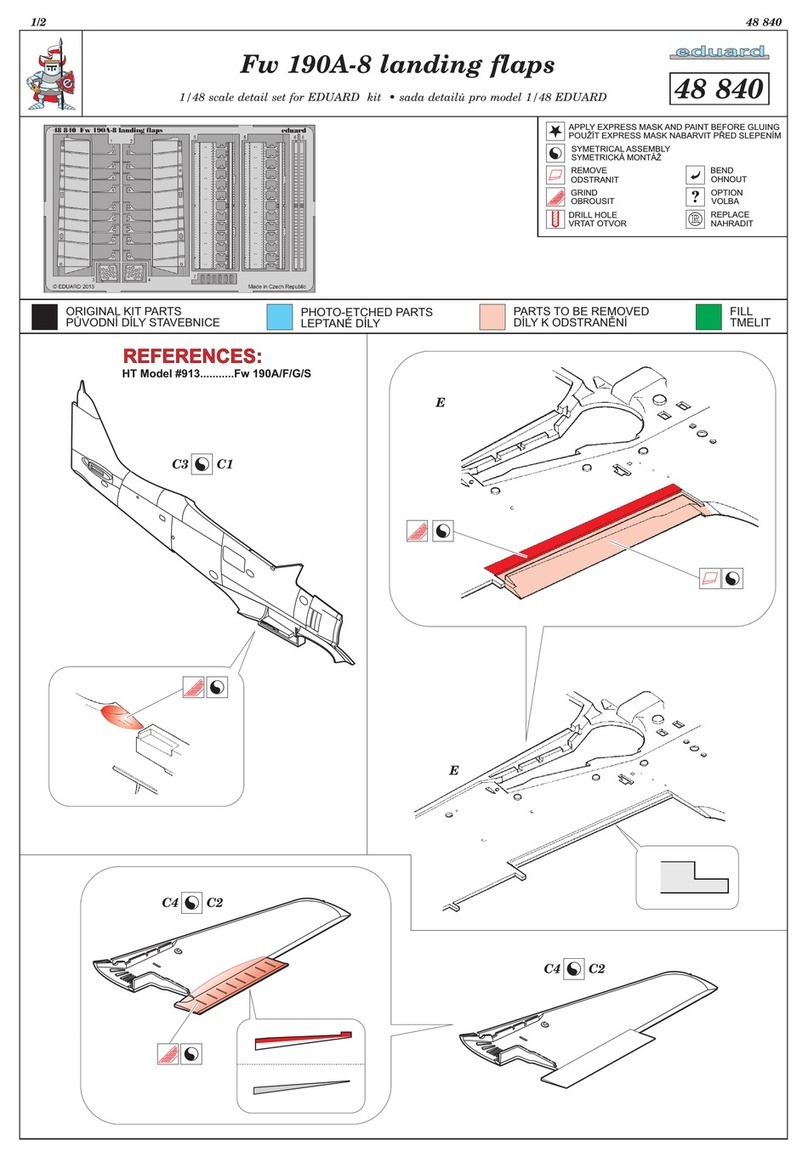
Eduard
Eduard Fw 190A-8 landing flaps manual
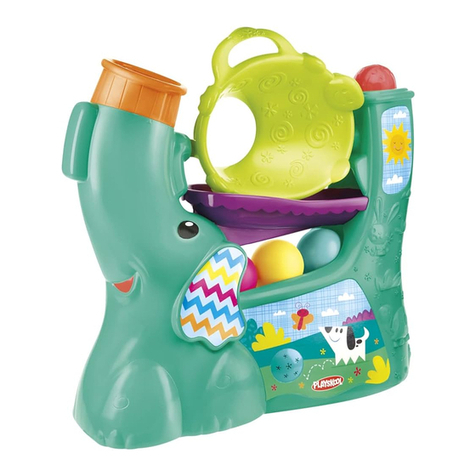
Hasbro
Hasbro TOYBOX TOOLS Playskool Chase 'n Go Ball... instruction sheet
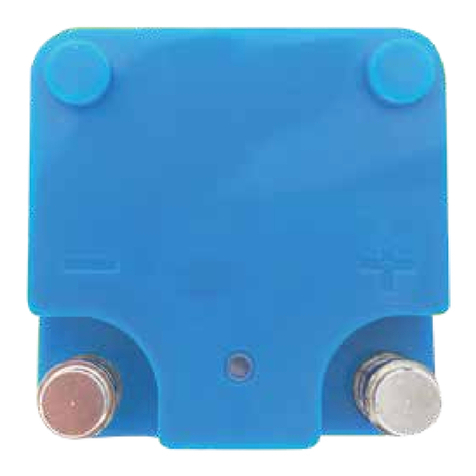
Circuit Cubes
Circuit Cubes Whacky Wheels Getting started
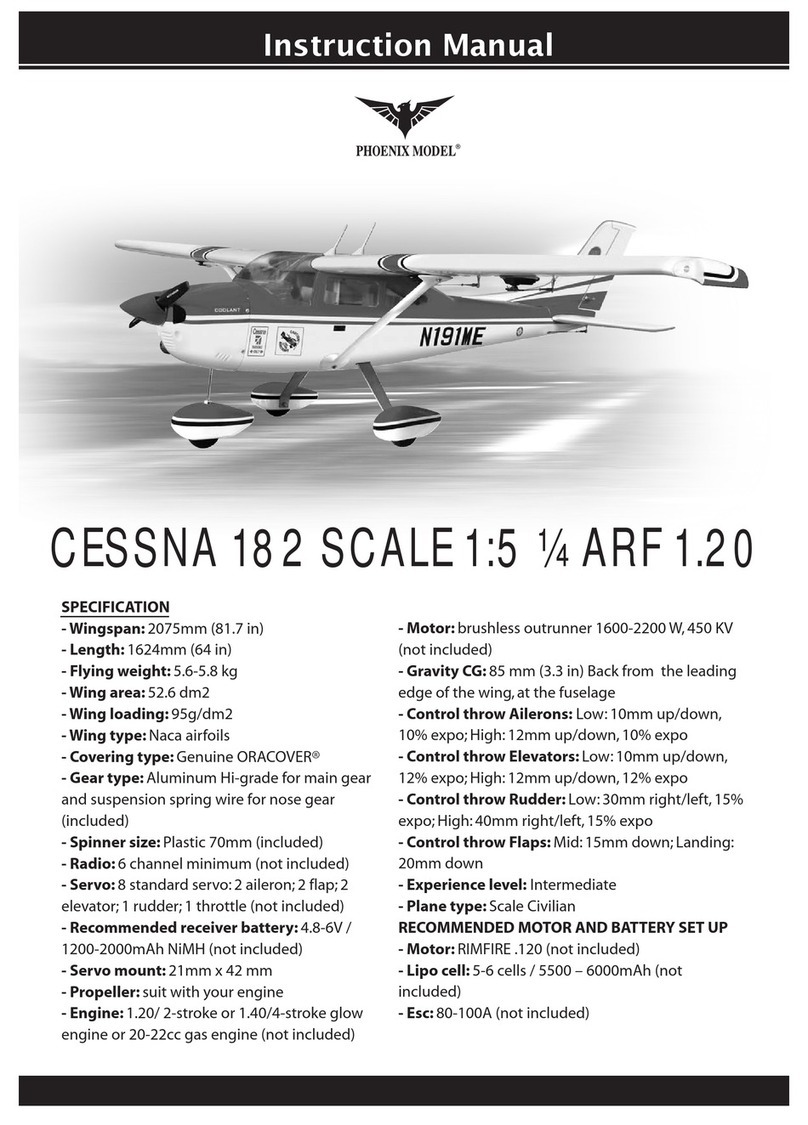
Pheonix Model
Pheonix Model Cessna 182 instruction manual
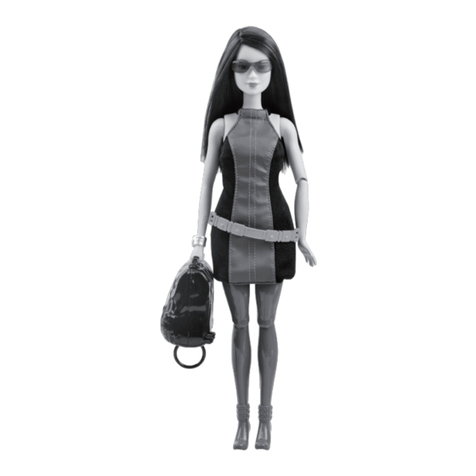
Mattel
Mattel Barbie DHF08-BC70 instructions
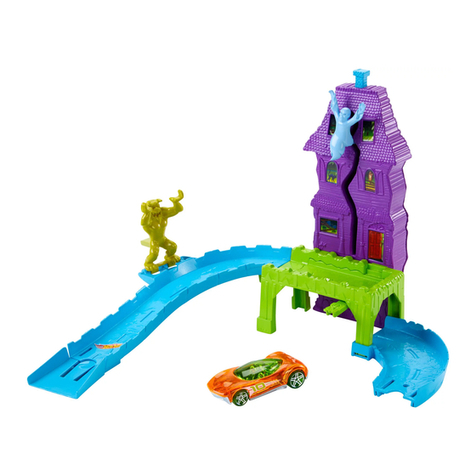
Mattel
Mattel Hot Wheels DEADMAN'S CURVE instructions
